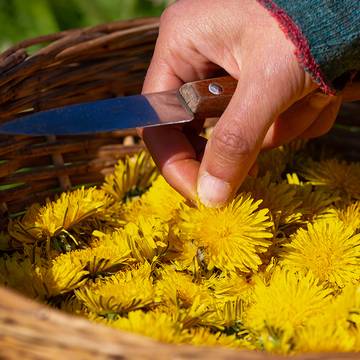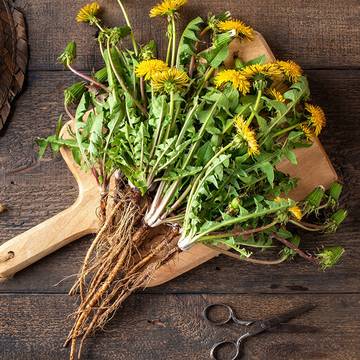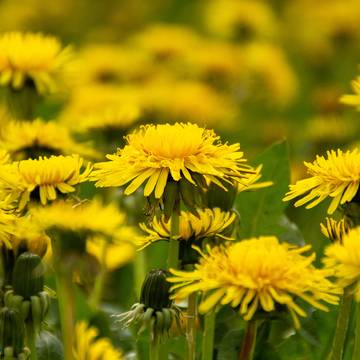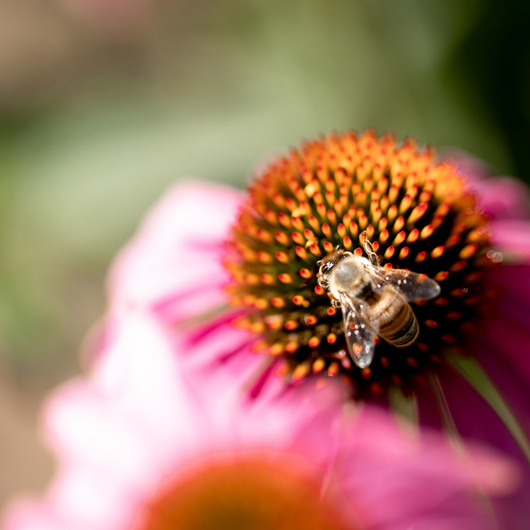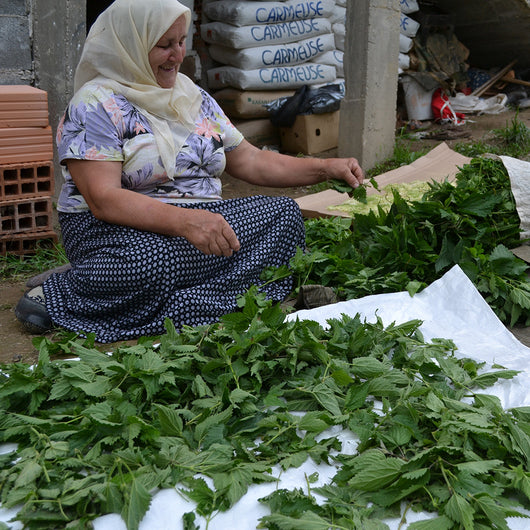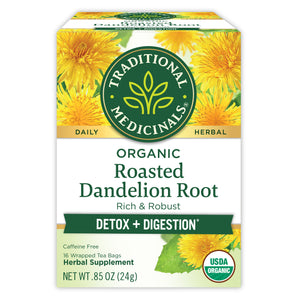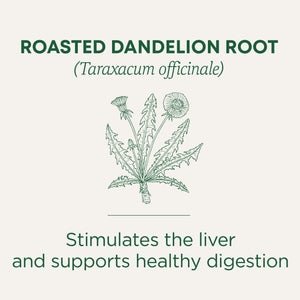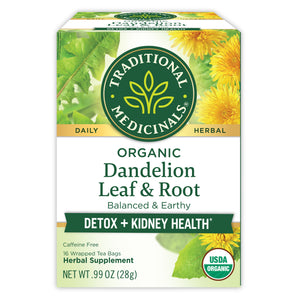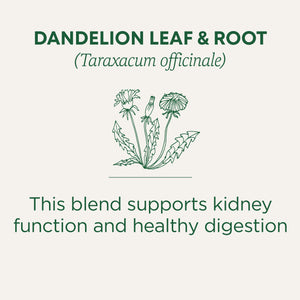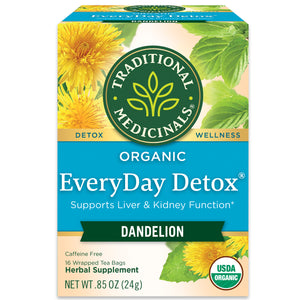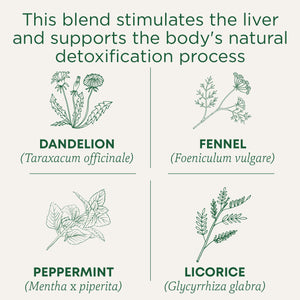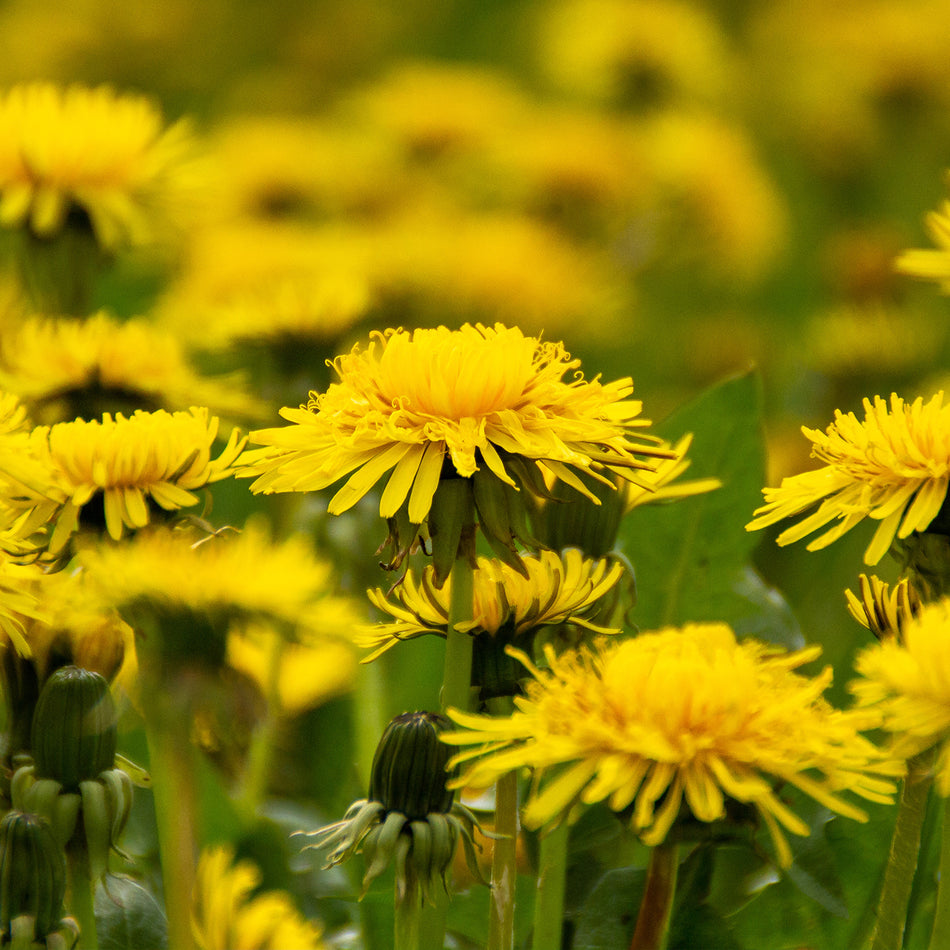
Dandelion
Taraxacum officinaleWhether eaten or consumed as tea, the uses of dandelion span from wild food to trusted herbal remedy to gently support the body’s natural detoxification process.*
An underestimated “weed” with herbal prowess.
What are the Benefits of Dandelion?
Dandelion’s benefits are often overlooked as most gardeners consider it a common garden weed. However, it is actually one of the great medicinal plants of Traditional European Herbalism. Dandelion root is rich with inulin and other prebiotic starches that feed healthy gut bacteria, while other herbal compounds within dandelion’s leaves support kidney function.*
The bitter flavor of dandelion, produced by sesquiterpene lactones, helps prepare the body for digestion. Tasting the bitter flavor promotes digestion while also stimulating the elimination of bile from the gallbladder.* Healthy elimination is vital, which is why dandelion’s action as a gentle diuretic can help support the body’s natural detoxification processes. In other words, dandelion tea makes you pee.*
Folklore & Historical Use of Dandelion
While the first puffy blooms of dandelion likely dotted landscapes in obscurity, the first known mention of dandelion as a medicinal herb is in Arabic texts dating to the 10th century. By the 13th century, it was mentioned in a Central European herbal text alongside 180 other medicinal plants and was primarily credited with a beneficial effect for the eyes. While common modern uses tend towards its effects on urinary, detoxification and hepatic functions of the body, it’s clear early practitioners and scholars were beginning to see dandelion as more than a common wildflower.*
More than an herbal medicine, over time humans quickly discovered the culinary appeal of dandelion from flower to root. Various cultures brewed the roots to make a slightly sweet and bitter tea or broth, fermented them into a hearty “root beer,” and dried, roasted and ground them into a rich powder for a robust “coffee-like” beverage. Others learned to harvest the young spring leaves to add to soups, juices, and salads. The yellow “petals” can be plucked from the head of the dandelion and sprinkled over salads, brewed into golden dandelion wine, transformed into a “honeyed syrup,” or kept intact as a blossom to batter and fry into crispy fritters.
Botanical Description & Habitat
Dandelion is a small perennial from the Asteraceae family that grows well in soils of all types—a quality that makes this plant so resilient, adaptable and widespread. Although a native of Europe and Western Asia, dandelion is now naturalized in many countries around the world. It attracts pollinators and earthworms and loosens the soil with its strong, deep roots.
Key identifiers for finding a “true” dandelion, as there are many Asteraceae look-alikes, is the singular, hollow stem attached to each bright yellow flower. When picked, the stem produces a drippy white substance that is actually a form of latex. Many yellow dandelion look-alikes will have multiple flowers branching off the same stem.
Another trait specific to dandelion is its jagged, hairless leaves, which earned it the name, dent de lion, meaning “lion’s tooth” in French and Spanish. Its round yellow flower has inspired others to call it “swine snout.” But it is dandelion’s botanical name of Taraxacum officinale, which speaks more favorably to the herb’s true purpose, in some translations as “healing herb.”
The medicinal parts are dried leaves harvested before the flowering season; the root collected and dried in autumn; the aerial parts and the rhizome harvested before the flowering season and then dried.
When To Use Dandelion
When you're seeking support to reset & refresh.
In the morning or afternoon to start your day off right.
Periodically to keep things flowing.
The Business of Sustainable Plants
Our business is rooted in plants, and for us, it’s a business imperative that we care for the ecosystems where these plants live and thrive. We believe that everything is interconnected, which means supporting ecosystems and the farmers and collectors who harvest and gather our herbs. Finding opportunities to reduce or eliminate emissions at the source, we support organic and regenerative farming practices as well as voluntary certifications like Organic and FairWild. These ensure the absence of pesticides, herbicides, as well as the ongoing sustainability of wild collection, and the health and livelihoods of the collectors who forage. Josef Brinckmann, Traditional Medicinals’ Research Fellow, Medicinal Plants and Botanical Supply, asserts, “Everyone has a role to play in preserving biological diversity. One way of doing that is by equitably supporting the local people to serve as stewards of the land.”
It Starts with Organic
We choose to source organic because we believe in the positive impacts it has on environmental sustainability, biodiversity, and overall ecosystem health. Organic helps us increase transparency while prioritizing consumer well-being and farmer success, which is key to producing the high-quality herbs we source. In 2021, we procured 2.73 million pounds of certified organic herbs, over 99.7% of our total botanical herbs purchased. Volumes were down slightly from FY20 due to timing of inventories received.
The impact from organic farming creates a vital ecosystem through improved soil health, water quality, pollinator habitats, and biodiversity. Organic farms also have increased carbon sequestration potential through long-term carbon storage in the soil, helping to mitigate climate change.
One of the benefits of organic that we most value is farmer health. We care deeply about the people who produce our herbs, ensuring that they are not exposed to synthetic chemicals found in conventional agriculture.
Fair Trade
We believe that everyone deserves a fair wage for hard work. That’s one of the reasons why we’re committed to fair trade. Traditional Medicinals® is a registered Fair Trade “brand holder”, “licensee” and “manufacturer,” and our products are certified by Fair Trade USA, an independent third-party certifier. We were an early adopter of Fair Trade, having launched our first fair trade tea product in 1998, just one year after Fairtrade International (FLO) was established. We continue to work closely with our network of producers to help them to implement fair trade standards and get certified.
Roasted Dandelion Root Tea
Roasted Dandelion Root tea stimulates the liver and...
View Full Details
Dandelion Leaf & Root Tea
Enjoyably mild and sweet, organic Dandelion Leaf &...
View Full Details
EveryDay Detox® Dandelion Tea
Organic EveryDay Detox Dandelion tea stimulates the liver...
View Full Details
Additional Information
Important Precautions:
Warnings – do not use if you have kidney disease, diabetes, or heart failure, or if you are allergic to plants in the daisy (Asteraceae) family.
Contrindications – consult your health care practitioner prior to use if you have liver or gallbladder disorders, bowel obstruction or of you are pregnant or breastfeeding.
Dandelion should be consumed for a period of 2 weeks, followed by a break before resuming.
Legal Disclaimer:
The information and other content in this article are designed to provide a general overview of the botany, cultural history, and traditional uses of this herb. It is not intended and should not be construed as health advice. Every person is unique and you should consult with your health care provider before using any herbal product or supplement.

